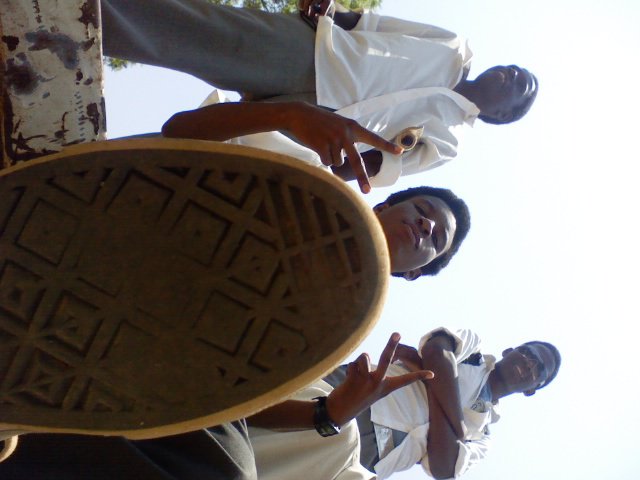MARRIAGE AND FAMILY
Most South Koreans today choose their own
spouses. Many forgo the elaborate traditional-style wedding and marry in public
wedding halls wearing contemporary clothes. Women retain their birth names
after they marry. The family is bound together by a strong sense of duty and obligation
among its members. The father is the head of the family; he and the eldest son
receive the greatest respect. In the extended family, the oldest members are
shown particular respect. The eldest son is traditionally given the best
opportunities for education and success. Professional opportunities for women
have expanded in recent years.
Although the nuclear family is now more
common, especially in the cities, sons still expect to care for their aging
parents. Because of the Confucian emphasis on family hierarchies, detailed
genealogies are kept. These go back centuries and include each person’s birth,
relations, achievements, and place of burial. A Korean name consists of a
one-syllable family name followed by a one- or two-syllable given name. Kim and Yi are
the most common family names.
EATING Rice is the main staple food. It is often combined with red beans or
vegetables and kimch’i, a spicy pickled cabbage. Korean cuisine uses a lot of spices. Soup
is often part of a meal, and chicken, beef, and fish are common. A favourite
delicacy is bulgogi, strips of marinated and barbecued beef. Barley tea is served with
most meals. Soju
and beer are common alcoholic drinks. Fruit is popular as a dessert. In recent year’s
western food such as hamburgers and pizza have become popular, especially among
young people. Many restaurants now cater to this change in tastes.
Chopsticks and spoons are the most commonly
used eating utensils. At a dinner party, the meal is usually served first,
before socializing. Items are passed and drinks are poured with the right hand,
while the left hand supports the forearm or wrist. When holding a glass to
receive a drink, it is polite to use both hands, eating while walking on the
street is not appropriate for adults.
SOCIALIZING A gentle nod is the traditional greeting. A slight bow shows respect
but should not be exaggerated. Among urban South Korean men, a nod is often
accompanied by a handshake. The left hand may support or rest under the right
forearm during the handshake to show respect. Women shake hands less often than
men. Between professionals meeting for the first time, business cards are
exchanged; they are presented face up and accepted with both hands after a
handshake. Special deference is shown to elders.
The use of someone’s title shows respect.
Foreign visitors should always address people formally unless asked to do
otherwise. A common greeting is Annyong haseyo? Which means 'How do you do?' Young children often greet each other with a simple Annyong? To show special respect, an honorific is added to the greeting: Annyong
hashimnikka? Young children bow or nod when
greeting adults. It is not unusual to see South Korean men (usually younger)
holding hands or walking with a hand on a friend’s shoulder. Touching older
people or members of the opposite sex is generally not appropriate, however.
Guests invited to a home remove their shoes upon entering. While European-style
furniture is common, in traditional Korean homes guests are seated on cushions
on ondol floors that are heated from below. Men sit cross-legged and women tuck
their legs to one side behind them. The guest receives the warmest or best
position. Guests invited for a meal or party customarily bring a small gift in
appreciation, often something that can be served at the gathering. Refreshments
are usually served, and it is impolite to refuse them.
RECREATION Baseball and soccer are the most popular spectator sports. Because
Seoul hosted the 1988 Olympic Games, the capital has some excellent facilities.
Koreans also enjoy basketball, swimming, tennis, boxing, and golf—many Japanese
travel to South Korea just to play golf. Walking and hiking are popular, and
the mountains provide opportunities for skiing and mountain climbing. The
national sport is the martial art tae kwon do. Another local sport is ssirum,
in which the contestants wrestle while wearing cloth harnesses. Cinemas, art
exhibits, and theatres also provide entertainment.
HOLIDAYS AND CELEBRATIONS
the New Year is celebrated over two days, on 1 and 2 January. Lunar
New Year is celebrated for three days in January or February. For this holiday,
families gather to exchange gifts, honour their ancestors, and enjoy large
meals. Generally, everyone dresses in traditional clothing. After memorial
services, family members bow to each older person in a show of respect, and to
exchange well wishes for the New Year. Games are played and fortunes are told.
The other important family holiday is Ch'usok (Korean Thanksgiving Day), when
family members visit the ancestral tomb to offer food in honour of their
ancestors. Other holidays include Independence Movement Day (1 March),
Children’s Day (5 May), Buddha’s Birthday (in May, observed according to the
lunar calendar), Memorial Day (6 June), Constitution Day (17 July), Liberation
Day (15 August), National Foundation Day (3 October), and Christmas Day (25
December). Arbour Day (5 April), Armed Forces Day (1 October), and Korean
Language Day (9 October) are marked by various celebrations but are not public
holidays.
On a person’s 60th birthday, members of the
extended family gather for a grand celebration, called Hwan’gap. New members of
the family are also celebrated. One hundred days after a child's birth, a small
feast is held in honour of the child; this celebration is a legacy of South
Korea's past high infant mortality rates. A much more significant celebration,
called Tol, is held at the first birthday. The first gift a child picks up from
among the many gifts offered is thought to signal his or her fortunes in life.


